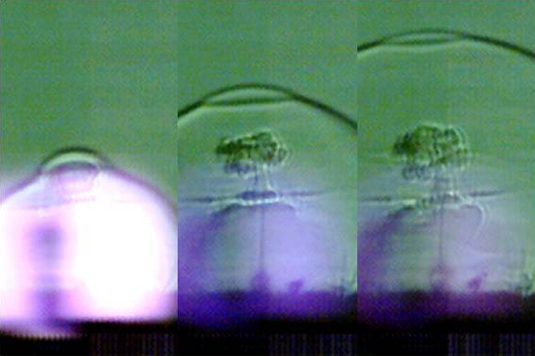Inorganic chemistry - New compounds pack more punch
 Selected snapshots from the high-speed video of the laser excitation of the new explosive. Picture: Klapötke
Selected snapshots from the high-speed video of the laser excitation of the new explosive. Picture: Klapötke
LMU chemists led by Professor Thomas M. Klapötke have synthesized two novel compounds which are markedly more efficient than those currently used in civil engineering. “These high-performance energetic substances are based on the parent molecule bispyrazolylmethane, but belong to a group of its derivatives that have not previously been described as explosive materials,” Klapötke says. The new substances, which are of interest not only for use by the military, but also have manifold applications in commercial contexts -- including oil exploration -- belong to the class of secondary explosives, which must be triggered by shock waves generated by a primary explosive. The researchers report their new results in the journal Angewandte Chemie.
A prime example of a widely used secondary explosive is hexanitrolstilbene (HNS), whose heat tolerance makes it particularly useful in the exploration of oil-bearing formations in the hottest parts of the world. One of the most potent secondary explosives known is CL-20, but it is difficult to synthesize and therefore very expensive. The two new compounds, which Klapötke synthesized in collaboration with Dr. Jennifer Gottfried of the US Army Research Laboratory, are both suitable for use in commercial settings. They display similar levels of thermostability to, and are significantly more powerful than HNS. In fact, one of them exhibits an energy density that is comparable to that of CL-20.
Angewandte Chemie 2016